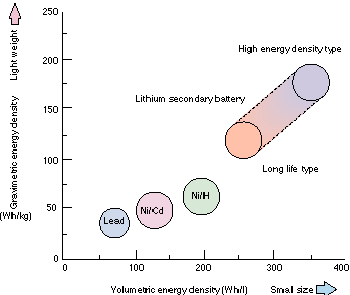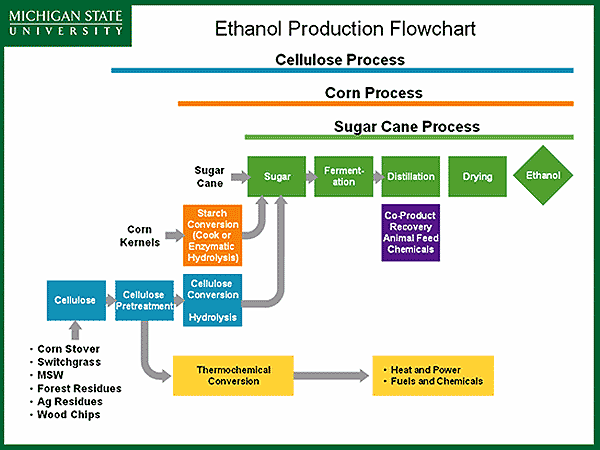Biodiesel is a domestically produced, renewable fuel that can be manufactured from vegetable oils, animal fats, or recycled restaurant greases.
According to the American Biofuels Association, with government incentives comparable to those that have been provided for ethanol, biodiesel sales could reach about 2 billion gallons per year, or replace about 8% of conventional highway diesel fuel consumption.
It takes about 7.3 pounds of soybean oil, which costs about 20 cents per pound, to produce a gallon of biodiesel. Feedstock costs alone, therefore, are at least $1.50 per gallon of soy biodiesel.
Clearly demands better energy storage batteries. There is a promising future here.

Long story short:
The energy density storage of batteries (in units of watt-hours per kilogram) is insufficient to power vehicles for long periods of time (> 2 hours).
The power density storage of batteries (in units of watts per kg) is sufficiently high to deliver the required power. but, it can't deliver that power for very long.
Ethanol is an alcohol-based alternative fuel produced by fermenting and distilling starch crops that have been converted into simple sugars. Feedstocks for this fuel include corn, barley, and wheat.
Today's commercially available vehicles that can use E85 (85% Ethanol and 15% gasoline) are called flexible fuel vehicles (or FFVs), meaning that they can run on E85, gasoline, or any mixture of the two.
More than 3 million FFVs have already been sold in the United States.
Most of the current E-85 fueling stations are located in the mid-west; however, there are approximately 150 E-85 fueling stations across the country.
SeQuential Biofuels is located in Eugene and is a local distributor of biodiesel and grain ethanol fuels.
Hydrogen (the Hydrogen Economy comes later in this class) is best choice for catalyst but does not occur naturally.
One substitute is methanol:
| Anode Reaction: | CH3OH + H2O => CO2 + 6H+ + 6e- |
| Cathode Reaction: | 3/2 O2 + 6 H+ + 6e- => 3 H2O |
| Overall Cell Reaction: | CH3OH + 3/2 O2 => CO2 + 2 H2O |
Two drawbacks:
- Methanol is toxic and highly flammable.
- Lower operating temperature than H-Fuel cell means more use of platinum (rare earth mineral) as a catalyst.
Principal advantage is that methanol (CH3OH) is easy to synthesize and doesn't require storage at high pressure or low temperature, like hydrogen does. Current production costs are about 50 cents per gallon.
Also methanol has about 50 times the energy density storage of lithium ion batteries
 expect this in your PC or laptop soon. (In fact, it's already there is some devices.)
expect this in your PC or laptop soon. (In fact, it's already there is some devices.)
Currently, this is most sensible for commercial fleets that can fuel from a commercial available compressors and there are a variety of natural gas buses currently in service, e.g ,BWI airport rental shuttles.
For the individual, a compressor costs about $1000 and would take abou 8-10 hours to "refuel" a vehicle.
This may have large potential:
- Conventional ethanol is derived from grains such as corn and wheat or soybeans.
This has somewhat limited yield per unit acre of crops grown.
- Cellulosic ethanol can be produced from a wider variety of cellulosic biomass feedstocks including agricultural plant wastes (corn stover, cereal straws, sugarcane bagasse), plant wastes from industrial processes (sawdust, paper pulp) and energy crops grown specifically for fuel production, such as switchgrass
Promise lies in the following:
Cellulosic ethanol production substitutes biomass for fossil fuels, changing the emissions calculations according to Michael Wang of Argonne National Laboratories. Wang has created a "Well to Wheel" (WTW) life cycle analysis model to calculate greenhouse gas emissions produced by fuels in internal combustion engines. Life cycle analyses look at the environmental impact of a product from its inception to the end of its useful life.
"The WTW model for cellulosic ethanol showed greenhouse gas emission reductions of about 80% [over gasoline]," said Wang. "Corn ethanol showed 20 to 30% reductions." Cellulosic ethanol's favorable profile stems from using lignin, a biomass by-product of the conversion operation, to fuel the process. "Lignin is a renewable fuel with no net greenhouse gas emissions," explains Wang. "Greenhouse gases produced by the combustion of biomass are offset by the CO2 absorbed by the biomass as it grows." (Note: I consider this a questionable/optimistic statement. This kind of balance is pretty difficult to achieve unless you are using designer crops.)
Read Michael Wang's Presentation. It's very informative.

Note that large-scale biomass production for alternative fuels potentially creates a lot of jobs.
Developing a comparative index. The higher the number the better.
